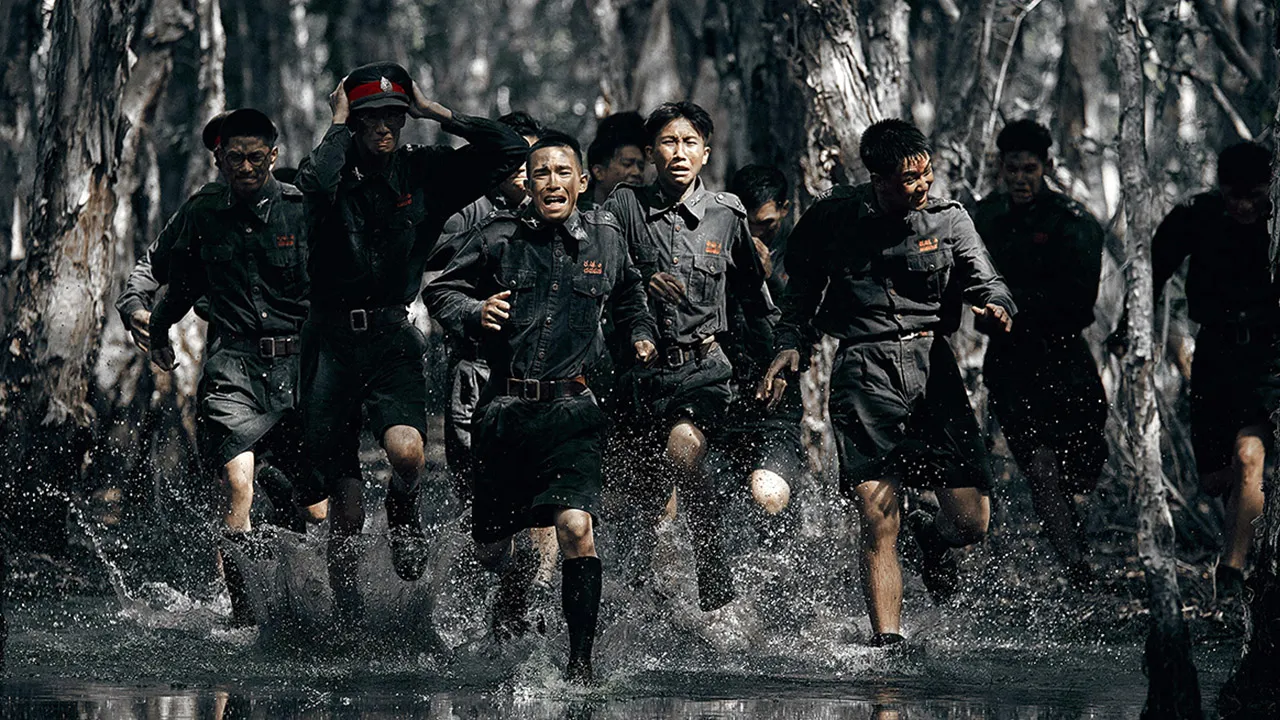Wartime Thailand in 1941 isn’t often depicted on screen, and Operation Undead drops us straight into Chumphon Province just as Japanese forces crash onto its beaches. The humid air, taut with anticipation, crackles with the promise of conflict—and then a bioweapon shatters any familiar expectations. Suddenly, men on both sides don’t just wage war; they become Fumetsu, undead soldiers who remember every order they once followed.
Rather than opting for mindless horror, director Kome Kongkiat Komesiri blends stark frontline drama with gruesome visceral shocks. Close-quarter firefights and blood-spattered foliage establish a rhythm that’s equal parts Saving Private Ryan–style chaos and indie-film grit.
Yet when infected Thai troops pause mid-skirmish to mourn their lost lives, the tone veers into unsettling territory: these aren’t cannon fodder but tragic victims still tethered to their humanity. That tension—soldiers as both heroes and monsters—becomes the film’s beating heart.
By reframing zombies as strategic combatants rather than shambling extras, the movie hooks casual viewers with its war epic scale while inviting genre fans to reexamine familiar undead tropes.
Narrative Mechanics: The Fumetsu Outbreak
The film kicks off with a blistering beach invasion: rifle volleys lighting up dawn mist, Thai sergeants barking orders, and Mok’s carefree banter with comrades still echoing. This juxtaposition—Mek’s disciplined formation against Mok’s easy-going youth—establishes a pacing pulley: the closer the camera pulls, the more frayed their bond appears.
A stray bullet, a containment breach—suddenly one Japanese test subject writhes in agony and transforms. The outbreak mechanic plays like a real-time strategy game glitch: infection spreads, battalions splinter, and both sides scramble to adapt. It’s a clever narrative device, echoing the spread-and-control loops of survival-horror titles like The Last of Us, where resource scarcity mirrors soldiers’ dwindling options.
When Mok succumbs fifteen minutes in, the script flips perspectives. We follow Mok leading Fumetsu rebels—intelligent enough to coordinate ambushes yet haunted by lingering memories. Meanwhile, Mek’s unit scrambles through jungle chokepoints, torn between duty and fraternal love. This dual-track structure resembles the “two‐player campaigns” in cooperative shooters, but here the stakes are heartbreakingly asymmetrical.
As the human–undead ceasefire forms, internal Fumetsu factions splinter, mirroring a multiplayer lobby gone rogue. Loyalties shift, commanders jockey for control, and the final confrontation isn’t just man vs. monster—it’s ideology vs. vengeance. This layered conflict elevates the third act, providing narrative payoffs that hinge on earlier character choices and thematic setup.
Characters as Playable Avatars
Mek’s arc reads like a veteran FPS protagonist forced into moral quandaries. Nonkul Chanon Santinatornkul conveys his rigidity cracking under personal loss—each silent stare at a fallen comrade feels like toggling from aggressive to stealth mode in a game, where every decision has emotional weight. His optimism gives way to doubt, especially in scenes where he hesitates to execute infected villagers, underscoring how narrative progression can pivot on character hesitation.
As the Fumetsu leader, Mok channels the broken-hero trope common in indie RPGs. Awat Ratanapintha’s performance layers guilt and strategic coldness—watch him rally undead troops like an AI general, then recoil at sounds of children crying. That duality illustrates identity mechanics: locked into zombie form yet free to choose empathy.
Japanese officers feel scripted as archetypal antagonists—cold efficiency without nuance—while Thai civilians serve as emotional side-quests, reminding us that collateral damage isn’t just a gameplay stat but lives torn apart. Brief moments—a mother clutching a photo, a soldier’s last whispered plea—reward those paying attention to world-building details.
Technical Craftsmanship and Immersive Design
Tight jungle frames pinch the field of view like an on-rails shooter, ratcheting tension as unseen threats brush past. In cave sequences, handheld closeups mimic low-HP screens, forcing audiences to inch forward. Sweeping beach panoramas then release the throttle, delivering scope reminiscent of open-world war epics.
Prosthetic gore—torn limbs, blood geysers—lands hard, akin to tactile haptic feedback. Yet recurring digital fire and mold overlays occasionally flicker like low-res textures in an underfunded indie mod. Describing these contrasts helps the writer gauge when immersion spikes or hiccups.
Gunshots crack with bone-shaking impact; distant insect chirps ground scenes in reality. Sparse piano motifs punctuate brotherly reunions, much like leitmotifs in narrative-driven games that signal character themes. Sound thus becomes a guide rail for emotional resonance.
Rapid cuts during skirmishes emulate adrenaline-pumping combat loops, while lingering takes on character reactions allow players—or viewers—to absorb narrative beats. The challenge lies in smoothing transitions from emotional flashbacks into sudden gore, ensuring no player/viewer is jolted out of the experience.
Full Credits
Director: Kongkiat Komesiri
Writers: Kongkiat Komesiri, Narit Pachoei, Pass Patthanakumjon, Suebpong Srihatri
Producers: Lakkana ‘Naam’ Palawatchai, Piyaluck Mahatanasab
Executive Producer: Francis Smith
Cast: Chanon Santinatornkul (Mek), Awat Ratanapintha (Mok), Supitcha Sangkhachinda (Pen), Akkarat Nimitchai, Thawatchanin Darayon, Seigi Ozeki (Captain Nakamura), Nobu T. Watanabe (Doctor Kaito), Tanakorn Tiyanont, Sithi Tesprateep
Director of Photography (Cinematographer): Pramett Chankrasse
Editor: Weerapat Tembundit
Composer: Giant Wave
The Review
Operation Undead
Operation Undead delivers a bold fusion of wartime grit and zombie horror, with standout performances anchoring its inventive split-narrative and emotionally charged set pieces. While occasional CGI misfires and pacing dips distract, the film’s thematic ambition and visceral practical effects make it a memorable genre mash-up that resonates long after the credits roll.
PROS
- Engaging dual-perspective narrative that deepens emotional stakes
- Strong chemistry between lead actors as brothers
- Visceral practical effects during key horror set pieces
- Creative portrayal of intelligent, remorseful undead
- Immersive sound design and tense cinematography
CONS
- Inconsistent CGI, especially digital fire and mold effects
- Occasional pacing lulls amid subplots
- Supporting Japanese officers feel underdeveloped
- Melodramatic beats can clash with gritty tone
- Overambitious scope leads to narrative clutter
